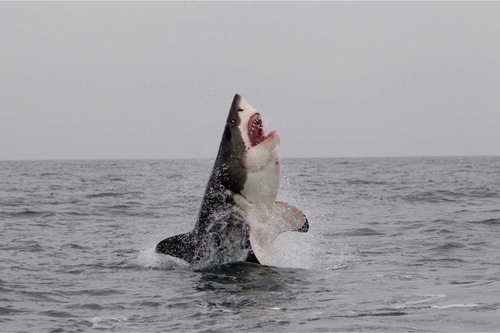Published in collaboration with the University of Bergen and the Institute of Marine Research, Norway, and the Marine Biological Laboratory, University of Copenhagen, Denmark
Five years ago, in October 2006, the Institute of Marine Research, Bergen, Norway (IMR, www.imr.no), was entrusted with the Editorial Office responsibilities for Marine Biology Research. Since then, our journal has further developed into a truly international journal that publishes high-quality scientific articles featuring basic research on all marine organisms and habitats and applied topics related especially to fisheries, environmental problems, climate change and sustainable management.
Regarding the performance of Marine Biology Research, positive signs have recently accumulated that allow us to face the future with optimism: the submission rate has tripled within six years, the page budget of the current volume will more than double this year compared to 2005 when the journal started, and – despite increasing workload – the overall processing time for submissions has decreased due to several instrumental measures implemented by our Editorial Board. After the impact factor has significantly increased for two years in a row, Marine Biology Research now ranks among the top half of the scientific journals in the Marine & Freshwater Biology category.
The Marine Biology Research Editorial Office works continuously towards further improving journal performance and worldwide spread in close collaboration with the Editors and the Publisher. At the same time, the office needs also to keep pace with nearly everyday tasks, ranging from the initial quality check of all incoming submissions to supervision and secretarial support of the reviewing process, and finally to language improvement (for papers with non-native speaking authors) and enhancement of production quality.
As our journal expands from originally six to now ten issues per year as well as in total page number, this allows us more options for publishing Thematic Issues and gives space for new publication categories to be included. For instance, beginning with this issue, two subcategories of Short Reports, ‘Mini-reviews’ and ‘Comments’, will be published. The Mini-review by Martin & Hammerschlag (Citation2012) in this issue deals with predator–prey interactions at the top of marine food chains, between white sharks, Carcharodon carcharias (Linnaeus, Citation1758) and Cape fur seals, Arctocephalus pusillus pusillus (Schreber, Citation1778), based on a substantial amount of field observations and behavioral recordings (see also the photograph on the next page). The Comments paper by Ridgeway (Citation2012) has been written as a constructive response to the recent article by Morton (Citation2011) referring to the physiological background of ageing in the long-lived mussel Arctica islandica (Linnaeus, 1767).
Figure A great white shark (Carcharodon carcharias) bursts through the waters' surface in an unsuccessful predation attempt on a Cape fur seal (Arctocephalus pusillus pusillus) at Seal Island in False Bay, South Africa. Surface swimming seals are capable of outmaneuvering their attackers; thus, to capture prey, white sharks must reach speeds of 35 km/h during vertical attacks. Photographer: Dr Neil Hammerschlag (www.neilhammer.com)

Marine Biology Research has since its start published high-quality taxonomic papers (see also Fenchel & Uiblein Citation2010; Fenchel & Uiblein Citation2011) and shall continue this tradition. In order to arrive at the best possible consistency among taxonomic papers, a distinct formatting standard shall be applied during submission preparation, which is now also referred to in the Instructions for Authors with a link to a recently published example (Uiblein & Heemstra Citation2011). In addition, we encourage all authors of non-taxonomic submissions to refer to the taxonomic authorities (plus year of description for animals) of scientific species names at first mention in the main text and/or in accompanying tables.
Finally, we would like to thank Kjersti Sjøtun and Alan Taylor, who recently left us as Subject Editors, for all their support and efforts towards our journal over many years. And we would like to warmly welcome our new Subject Editors, Ann-Lisbeth Agnalt (Shellfish Ecology and Management), Sally Hacker (Seagrasses and Seagrass Community Ecology), Göran Nilsson (Marine Vertebrate Physiology) and Mirta Teichberg (Macroalgae and Macroalgae Physiology)!
Notes
Published in collaboration with the University of Bergen and the Institute of Marine Research, Norway, and the Marine Biological Laboratory, University of Copenhagen, Denmark
References
- Fenchel , T and Uiblein , F. 2010 . Marine Biology Research: Taxonomy of marine organisms . Marine Biology Research , 5 : 313 – 14 .
- Fenchel , T and Uiblein , F. 2011 . Biodiversity in concert: Common, uncommon . and new species Marine Biology Research , 6 : 1 – 5 .
- Linnaeus C. 1758 . Systema naturae per regna tria naturae, secundum classes, ordinus, genera, species, cum characteribus, differentiis, synonymis, locis. Tomus I. Editio decima, reformata. Impensis Direct . Laurentii Salvii Holmiae 824 pages.
- Linnaeus C. 1767 . Systema naturae per regna tria naturae, secundum classes, ordinus, genera, species, cum characteribus, differentiis, synonymis, locis. Tomus I. Editio duodecima, reformata Impensis Direct. Laurentii Salvii, Holmiae , p 533 – 1327 .
- Martin RA , Hammerschlag N. 2012 . Marine predator–prey contests: Ambush and speed versus vigilance and agility . Marine Biology Research 8 : 90 – 94
- Morton , B. 2011 . The biology and functional morphology of Arctica islandica (Bivalvia: Arcticidae)–A gerontophilic living fossil . Marine Biology Research , 7 : 540 – 53 .
- Ridgeway I. 2012 . Comments on ‘The biology and functional morphology of Arctica islandica’ (by Brian Morton, Marine Biology Research 7(6), 2011). Marine Biology Research 8 : 95 – 97 .
- Schreber JCD. 1778 . Die Säugethiere in Abbildungen nach der Natur mit Beschreibungen . Dritter Theil . Erlangen , Walther , p 284 – 590
- Uiblein , F and Heemstra , PC. 2011 . A new goatfish, Upeneus seychellensis sp. nov. (Mullidae), from the Seychelles Bank, with remarks on Upeneus guttatus and a key to Western Indian Ocean Upeneus species . Marine Biology Research , 7 : 637 – 50 .